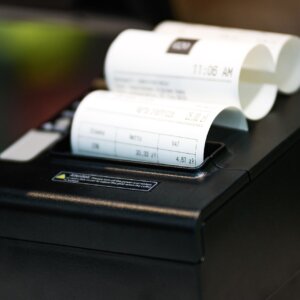VAT returns can be a burden for many businesses. At Alexander & Co, we can help you navigate the complex world of VAT legislation. VAT affects all businesses and the financial penalties can be extremely high, due to non-compliance. We provide VAT specialists that will assist you with any compliance issues. We can also assist in minimising any liabilities and penalties in the event of a VAT investigation.
VAT Returns and VAT advisory
Our specialists can help you understand the following areas and help you avoid running into any trouble with VAT:
- VAT Registration and De-Registration
- Assistance with VAT Return Completion
- VAT Control and Reconciliation
- Advice on the most appropriate scheme
- Negotiation with HM Revenue & Customs including representation at First Tier Tribunals
VAT Registration and De-Registration
Our VAT specialists can help you with registering your business for VAT or unregistering your business from VAT. The sale of the majority of goods or services is taxed by the Government, therefore, it is important to be registered correctly for VAT to avoid penalties.
If your business has an annual turnover of £85,000, you need to make sure you are registered for VAT. We can help you understand what information is required and also ensure you fill in the correct VAT Return.
VAT Returns – assistance with VAT Return Completion
If you have identified your business as needing to register for VAT, As a client, we can assist. Our team is available to answer any questions or solve any issues you may have with VAT.
Assisting you in completing and returning VAT will help to minimise risk of errors and your business facing penalties.
VAT Control and Reconciliation
Companies that are VAT registered need to produce and reconcile their VAT Return either quarterly or on a monthly basis. We can assist you in controlling and reconciling your VAT. This process is best managed by a fully qualified accountant as it requires the VAT to be accurately reviewed.
Advice on the most appropriate scheme
There are many different VAT schemes to choose from. We can help you decide the best method for you by taking you through the different options and outlining the benefits and the pitfalls.
Negotiation with HM Revenue & Customs and representation at First Tier Tribunals
Already facing a penalty or tribunal over VAT Returns? We can help you organise your negotiations with HM Revenue & Customs and also offer advice surrounding First Tier Tribunals. These circumstances can be confusing and stressful. Let our team help you through this difficult time and find a solution.
Contact Alexander & Co for advice on VAT and VAT returns
For help with VAT and accounting issues, please contact our specialist VAT team. They will be happy to discuss your requirements and explain how we can work together. You can complete the form on this page or email info@alexander.co.uk we will then be in touch with you.
Contact a professional now

"Alexander & Co are insightful, dedicated, experienced and trustworthy. Having experienced and worked with the big four accountants I will continue to put my trust and faith in Alexander & Co."https://en.dragonpass.com.cn
VAT news


